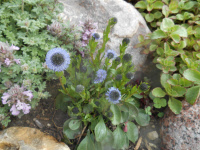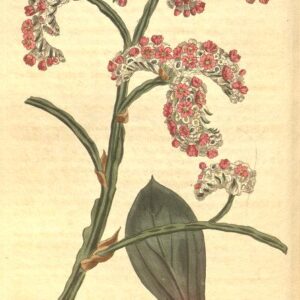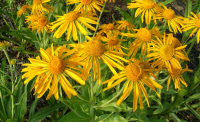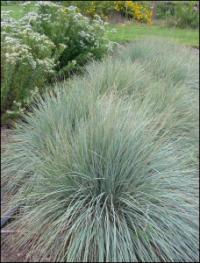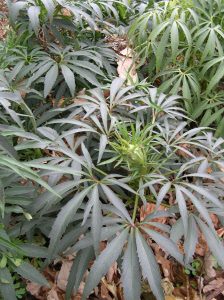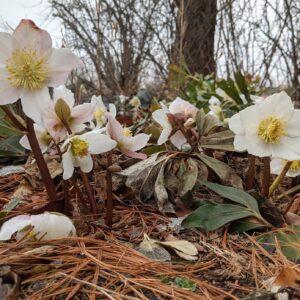Our Plants
Showing 249–256 of 587 results
-
Globularia cordifolia Globe daisy, Wedge leaved globularia Z 5-9
Dense, blue, globe-shaped umbels in spring
OUT OF STOCK
Dense, blue, globe-shaped umbels in spring, mat forming, leathery, spoon-shaped leaves.
Size: 5” x 12”
Care: sun in well-drained soil
Native: alpine pastures in Switzerland and Pyrenees
Awards: Royal Horticultural Society Award of Merit.Collected before 1753. “The most desirable (Globularia) for the rockwork is the neat G. cordifolia which is a little prostrate trailing shrub with bluish flowers.” William Robinson 1879.
-
Globularia nudicaulis Globe daisy Z 3-8
Cobalt blue puffs on naked stems rise above compact rosettes of glossy oval leaves, May-June
Cobalt blue puffs on naked stems rise above compact rosettes of glossy oval leaves blooming May-June
Size: 4-8” x 4”
Care: Sun to part shade in well-drained soil. Drought tolerant/rock garden plant.
Native: northern Spain to the Pyrenees MountainsIn gardens before 1753
-
Goniolimon speciosum syn. Statice speciosa, Limonium Dwarf Statice Z 3-9
Evergreen, flat, agave-like blue-green rosette of leaves. In mid-summer light pink, flat-topped flower clusters held on leafless stems 10-12” above foliage. Very different, fun and easy to grow.
Evergreen, flat, agave-like blue-green rosette of leaves. In mid-summer light pink, flat-topped flower clusters held on leafless stems 10-12” above foliage. Very different, fun and easy to grow.
Size: 10-12’ X 8”
Care: sun in well-drained soil
Native: Steppes of Eurasia: Russia, Siberia, Mongolia & western ChinaCollected by German naturalist Johann Georg Gmelin (1709-1755)1st described in 1753 then named and renamed several times. Pictured in Curtis’s Botanical Magazine 18. No. 656 1803.
-
Gypsophila repens ‘Rosea’ Creeping baby’s breath Z 4-7
Tough but dainty appearing pink flowers on short, thin stems smother gray-green leaves from June to October. Excellent groundcover, front of the border or rock garden plant.
Tough but dainty appearing pink flowers on short, thin stems smother gray-green leaves from June to October. Excellent groundcover, front of the border or rock garden plant.
Size: 8" x 10-12"
Care: Full sun in well-drained soil.
Native: Mountains of central and southern EuropeGypso is Greek meaning “gypsum or lime.” Phylos means “loving.” Plant requires limey (alkaline) soil. Discovered in Siberia in 1774.
-
Helenium hoopesii syn. Hymenoxys hoopesii Orange sneezeweed, Owlsclaws Z 3-8
Large mustard yellow, tending to orange, daisies with drooping petals and yellow center flowers May and continuing to September, if deadheaded.
OUT OF STOCK
Large mustard yellow, tending to orange, daisies with drooping petals and yellow center flowers May and continuing to September, if deadheaded.
Size: 3’ x 2’
Care: sun in moist well-drained soil
Native: Rocky Mountains
Wildlife Value: attracts bees, butterflies & moths. Rabbit and deer resistant - toxicNavajo boiled its petals with juniper ash to make a yellow dye. They also chewed the roots for their sugary taste. Indians of the Great Basin dried the leaves and flowers and inhaled them to remedy headaches, while a snuff of only dried flowers, not the leaves, remedied hay fever. Collected by C.C. Parry (1823-1890) given the name “King of Colorado Botany.” Liberty Hyde Bailey (1933) referred to this as “a very fine border plant and especially laudable for cut flowers.”
-
Helictotrichon sempervirens Blue oat grass Z 4-9
June-October spikes rise above a rounded mound of thin, steel-blue, evergreen (sempervirens means always green) leaves – one of the best.
OUT OF STOCK
June-October spikes rise above a rounded mound of thin, steel-blue, evergreen (sempervirens means always green) leaves – one of the best.
Size: 4' x 2'
Care: full sun in moist well-drained to well-drained soil
Native: Europe
Awards: Elisabeth Carey Miller Botanical Garden Great Plant Pick, England’s Royal Botanical Society Award of Garden Merit.1st described in Prospectus de l’Histoire des Plantes de Dauphiné 17. 1779. Liberty Hyde Bailey said that Blue oat grass was “scarcely grown as ornamental subjects.”(1933)
-
Helleborus foetidus Bear’s foot Z 5-8 POISON
Nodding chartreuse cups with purple accents emerge in March-April from evergreen, palmate foliage. As much as a Robin - the 1st sign of spring.
OUT OF STOCK
Nodding chartreuse cups with purple accents emerge in March-April from evergreen, palmate foliage. As much as a Robin – the 1st sign of spring.
Size: 12-24" x 18-24"
Care: full to part shade in well-drained to moist well-drained soil.
Native: W. Europe
Awards: Great Plant Pick Award from Elisabeth Carey Miller Botanical Garden; England’s Royal Horticultural Society Award of Merit.
Size: Deer and rabbit resistantThe name Helleborus is Greek from hellein meaning “to kill” and bora meaning “food” referring to the plant’s poisonous qualities if eaten. Foetidus because crushed leaves are malodorous, but the flowers are sweetly fragrant. In gardens before 1753. In 1876 it was a “well known old-fashioned plant…” The Garden.
-
Helleborus niger Christmas rose, Black hellebore Z 5-8 POISON
Outfacing, white, waxy cup-shaped flowers resembling single roses in late winter, evergreen leaves.
OUT OF STOCK
Outfacing, white, waxy cup-shaped flowers resembling single roses in late winter, evergreen leaves.
Size: 12-20” x 12”
Care: part shade in moist well-drained soil
Native: rocky places in Europe
Awards: Received Royal Horticultural Society Award of Merit.The name Helleborus is Greek from hellein meaning “to kill” and bora meaning “food” referring to the plant’s poisonous qualities if placed in food. This species is ancient – known as long ago as 300 BC in Greece where it “purged and cured the mad or melancholicke daughters of Praetus with the roots thereof.” (Parkinson, 1629) Grown in the Eichstätt Garden, the garden of Johann Konrad von Gemmingen, prince bishop of Eichstätt in Bavaria, c. 1600. In Middle Ages petals thrown on floor to drive out evil and ward off power of witches. English herbalist John Gerard (1545-1612) strangely recommended it for curing poisoned animals. Sorcerers made themselves invisible by tossing the powdered plant in the air.

